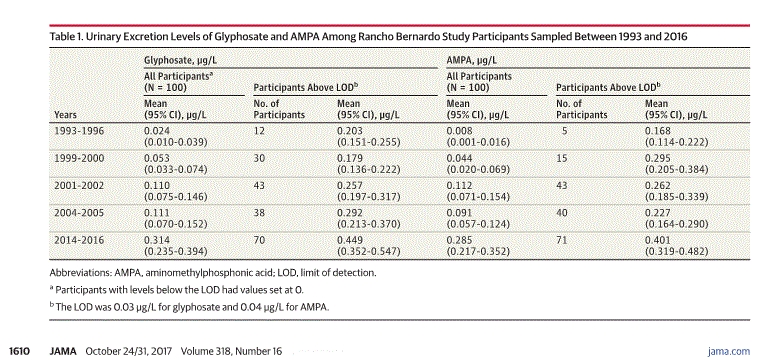Mills PJ, Kania-Korwel I, Fagan J, McEvoy LK, Laughlin GA, Barrett-Connor E. Excretion of the Herbicide Glyphosate in Older Adults Between 1993 and 2016. JAMA. 2017;318(16):1610–1611.
“Where Man is not, Nature is barren” said William Blake, and I agree. But I’m not sure Blake would have approved of fields being made barren by Man using glyphosate as a herbicide before using them to grow high-yield wheat. This ubiquitous practice has led to more and more glyphosate appearing in the urine of humans, at least in Southern California where it rose 13-fold in two decades from 1993.
At the same time we are seeing an epidemic of fatty livers in richer countries, attributed to obesity and/or alcohol. Now it so happens that glyphosate in very low concentrations causes liver steatosis and fibrosis in mammal models. More epidemiology here please, and hurry up.
The herbicide Roundup is sprayed onto genetically modified crops and applied as a desiccant to most small non–genetically modified grains. Use of this herbicide has increased since 1994 when genetically modified crops were introduced in the United States. Glyphosate, the primary ingredient in the herbicide, is found in these crops at harvest.
Environmental exposure through dietary intake of these crops has potential adverse health effects and can be assessed by measuring urinary excretion. We measured excretion levels of glyphosate and its metabolite aminomethylphosphonic acid (AMPA) in participants from the Rancho Bernardo Study (RBS) of Healthy Aging.














